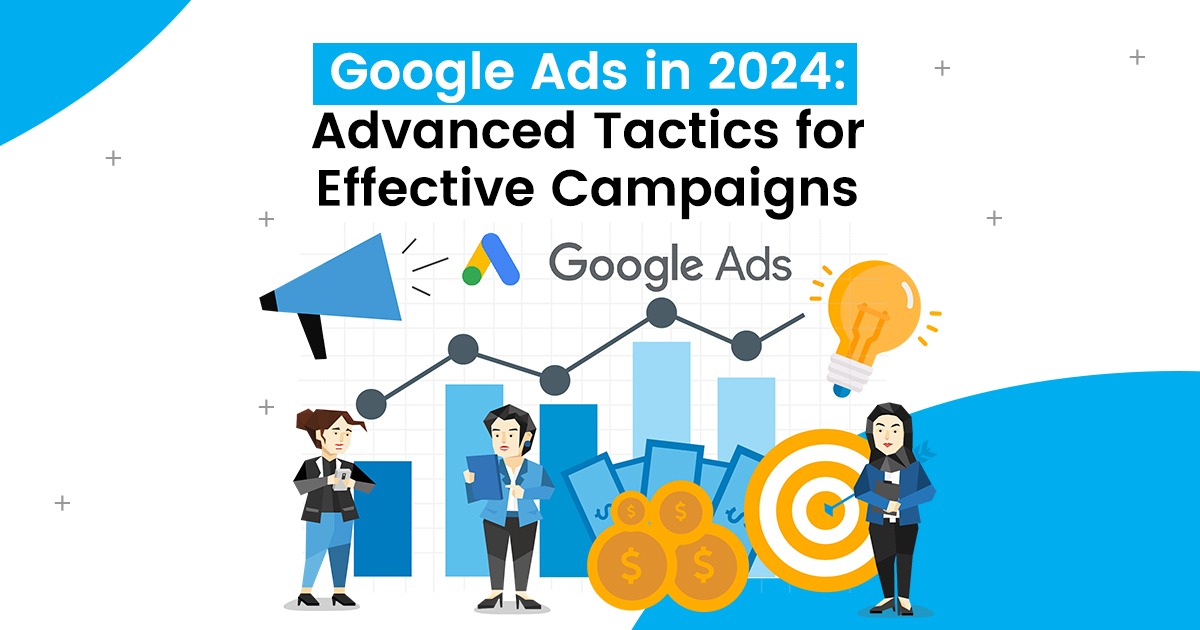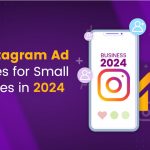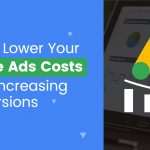Google Ads in 2024: Advanced Tactics for Effective Campaigns
|
Getting your Trinity Audio player ready...
|
Google Ads in 2024: Advanced Tactics for Effective Campaigns
As digital marketing continues to evolve, Google Ads remains a cornerstone for businesses looking to capture online traffic and convert leads. With each passing year, Google Ads introduces new features and techniques that can help marketers optimize their campaigns. In 2024, leveraging advanced strategies in Google Ads can be the difference between a good campaign and a great one. Here, we’ll explore the most effective tactics for Google Ads campaigns in 2024.

1. Maximizing the Power of AI and Machine Learning
Artificial intelligence (AI) and machine learning (ML) have reshaped digital marketing, and in 2024, these technologies are more influential than ever in Google Ads. Google’s AI-driven bidding strategies, such as Target CPA (Cost Per Acquisition) and Target ROAS (Return on Ad Spend), allow businesses to automate and optimize bids based on historical data. This reduces manual effort while ensuring higher conversion rates.
How to implement:
- Use Google’s Smart Bidding strategies to automate bid management and focus on high-converting actions.
- Analyze the performance of automated bidding through machine learning insights, and adjust settings based on feedback from Google’s algorithms.
- Leverage dynamic ads, which are powered by AI to create personalized ad copies and match the right audience to the right message.
2. Leveraging Data-Driven Attribution
Attribution modeling has long been a challenge for marketers, as understanding which touchpoints lead to conversions is key to refining your marketing strategy. In 2024, data-driven attribution (DDA) has become more precise with Google’s machine learning capabilities. DDA allocates conversion credit across multiple touchpoints in a customer’s journey, providing a more holistic view of your campaign’s effectiveness.
How to implement:
- Use Google’s data-driven attribution model instead of last-click attribution to get a clearer understanding of all your campaign touchpoints.
- Regularly review the Attribution report in Google Ads to see which channels and keywords are contributing the most to conversions.
- Focus on reallocating budget to high-impact touchpoints based on insights from your data-driven attribution model.
3. First-Party Data and Audience Targeting
With data privacy regulations tightening and third-party cookies phasing out, first-party data is becoming more important for targeting in 2024. Collecting and utilizing data from your customers will allow you to create highly targeted ads and lookalike audiences in Google Ads.
How to implement:
- Set up robust first-party data collection methods on your site, such as email sign-ups and customer surveys, to build your customer lists.
- Use Customer Match to upload your first-party data to Google Ads and create highly targeted audiences.
- Create lookalike audiences based on your existing customers to expand your reach to similar users who are more likely to convert.
4. Utilizing Performance Max Campaigns
Performance Max is one of the most powerful campaign types in Google Ads in 2024. This goal-based campaign type allows you to run ads across all of Google’s platforms (Search, Display, YouTube, Gmail, and Discover) from one central campaign. Performance Max leverages AI and machine learning to serve your ads in the most relevant places, at the right times.
How to implement:
- Set up a Performance Max campaign by defining your conversion goals, budget, and target audience.
- Provide diverse assets, such as videos, images, and text, to allow Google’s AI to create combinations that perform best.
- Regularly review the performance insights provided by Google to see which channels and formats are contributing to conversions, and tweak your assets or targeting accordingly.
5. Harnessing Responsive Search Ads (RSAs)
Responsive Search Ads (RSAs) are one of the most dynamic ad formats available in 2024. Google allows advertisers to input multiple headlines and descriptions, which are then automatically combined into ads that perform best for each search query. This flexibility ensures that your ads are always relevant to the user’s search intent.
How to implement:
- Write multiple headlines (up to 15) and descriptions (up to 4) that can be mixed and matched by Google’s algorithm.
- Test different variations of headlines and descriptions to see which resonate best with your audience.
- Use the “Ad Strength” indicator in Google Ads to ensure your RSAs are optimized for maximum performance.
6. Focusing on Video Ads and YouTube Integration
In 2024, video continues to be a powerful medium for capturing attention and driving conversions. With YouTube’s vast reach, integrating video ads into your Google Ads strategy is essential for maximizing your campaign’s effectiveness. Google’s video ad formats, such as skippable in-stream ads and video discovery ads, provide diverse opportunities for brands to connect with their audience.
How to implement:
- Create engaging, short-form video content that captures attention within the first few seconds. Focus on strong storytelling and clear CTAs.
- Use Video Action Campaigns, which combine video ads across YouTube and Google’s video partner sites to drive action (e.g., clicks and conversions).
- Monitor YouTube’s analytics for insights into how users are engaging with your video ads, and make data-driven adjustments.
7. Enhanced Targeting with Affinity and In-Market Audiences
Google Ads provides advanced audience targeting options that allow you to focus on users based on their interests, behaviors, and recent purchasing intentions. Affinity audiences target users based on their long-term interests, while In-Market audiences reach those actively researching products or services similar to yours.
How to implement:
- Create campaigns targeting Affinity Audiences to build brand awareness with users who have an ongoing interest in your industry.
- Set up campaigns using In-Market Audiences to capture users who are in the buying phase and more likely to convert.
- Use custom audiences by combining first-party data with Google’s intent signals to hyper-target specific segments of users.
8. Optimization through A/B Testing
Constant testing and iteration remain crucial for Google Ads success in 2024. A/B testing allows you to determine which ad copies, creatives, and targeting strategies are most effective for your audience. By regularly experimenting with different campaign elements, you can continually refine and improve your campaigns.
How to implement:
- Run A/B tests on different headlines, CTAs, and landing pages to see which combinations drive the most conversions.
- Test different bidding strategies (manual vs. automated) to identify the approach that works best for your budget and goals.
- Use Google’s Experiments tool to track performance differences between two versions of a campaign and make data-driven decisions.
Google Ads in 2024 offers powerful tools and technologies that allow marketers to build highly effective campaigns. By leveraging AI, machine learning, first-party data, and advanced targeting options, advertisers can create dynamic and personalized campaigns that drive higher conversions. Staying ahead of these trends and continuously optimizing through testing will help businesses maximize their return on investment and achieve long-term success in the ever-competitive digital landscape.

 Previous Post
Previous Post Next Post
Next Post